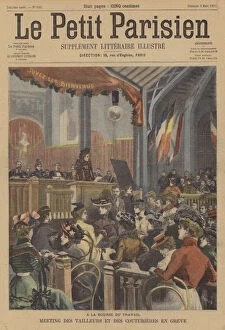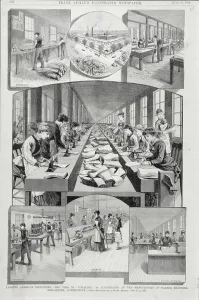Clothing Industry Collection
The clothing industry has a rich history that spans centuries and continents
All Professionally Made to Order for Quick Shipping
The clothing industry has a rich history that spans centuries and continents. From the establishment of the Flemish Weavers in Manchester in 1363 to the striking tailors and dressmakers at the Paris Labour Exchange in 1888, this industry has witnessed significant milestones. In celebration of St Catherine, patron saint of clothing workers, vibrant lithographs capture the essence of unity among these skilled individuals. The dedication and craftsmanship are further showcased through engravings depicting women meticulously making corsets in 1884. During World War I, female workers played a crucial role in supporting their nations' armies. Whether it was working at the Royal Army Clothing Factory or sorting uniforms at WaC clothing store, their contribution was invaluable. These images from 1914-1918 provide a glimpse into their determination and resilience. Across borders, even midtown Manhattan saw its fair share of bustling negligee factories during the 1920s. Female workers tirelessly labored to create exquisite garments that would adorn women across America. Traveling back in time to the 16th century, we encounter Jost Amman's portrayal of a tailor immersed in his craft. This illustration serves as a reminder that tailoring skills have been honed for centuries and continue to be cherished today. Silk manufacturing also holds an important place within this industry's narrative. Underwood & Underwood's photographs from Syria depict intricate processes involved in creating this luxurious fabric during the early 1900s. Within central hallways adorned with history lies Pimlico's Royal Army Clothing Depot from around 1880—a testament to how establishments dedicated themselves to outfitting soldiers throughout generations. Even amidst times of conflict like World War I, attention was given to prisoners of war who required appropriate attire on Champs-Elysees streets—highlighting compassion within an otherwise tumultuous period.













